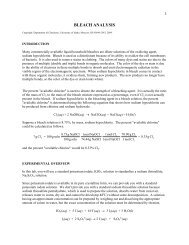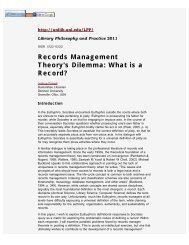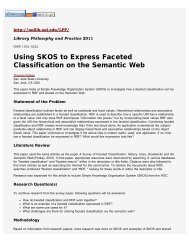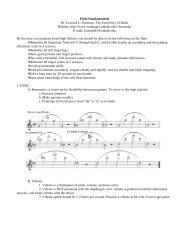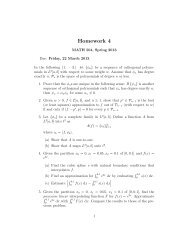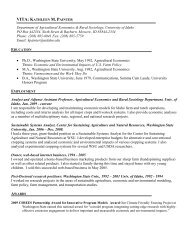Gandhi, Ahimsa, and the Self - University of Idaho
Gandhi, Ahimsa, and the Self - University of Idaho
Gandhi, Ahimsa, and the Self - University of Idaho
You also want an ePaper? Increase the reach of your titles
YUMPU automatically turns print PDFs into web optimized ePapers that Google loves.
elatedness with o<strong>the</strong>r determinate beings. . . which, in turn, manifests itself in compassion, <strong>the</strong> ability to<br />
be affected by <strong>the</strong> suffering <strong>of</strong> o<strong>the</strong>rs." 36 The problem with this statement is that Shankara believed that<br />
relations <strong>and</strong> determinations are ultimately unreal, which means that suffering is also illusory. Most<br />
forms <strong>of</strong> pan<strong>the</strong>ism, especially <strong>the</strong> personalistic panen<strong>the</strong>ism <strong>of</strong> Ramanuja <strong>and</strong> process philosophy, do<br />
affirm real differences within a unitary cosmos. Given <strong>G<strong>and</strong>hi</strong>'s love for <strong>the</strong> Bhagavad-gita, <strong>and</strong> <strong>the</strong><br />
fact it does support <strong>the</strong> plurality <strong>of</strong> souls <strong>and</strong> embodies a strong personal <strong>the</strong>ism, he should have pre-<br />
ferred this view over Advaita Vedanta. (After all he did come from a Vaishnava family.)<br />
The concept <strong>of</strong> a permanent self underlying <strong>the</strong> phenomenal self is one idea that <strong>G<strong>and</strong>hi</strong> does<br />
sometimes appropriate from <strong>the</strong> upanishadic tradition. Roy supports this view <strong>of</strong> self in his retelling,<br />
from <strong>the</strong> Panchatantra, <strong>the</strong> parable <strong>of</strong> <strong>the</strong> tiger cub. 37 One day a tiger, while planning an attack on a<br />
herd <strong>of</strong> goats, saw a tiger cub among <strong>the</strong>m. The tiger took <strong>the</strong> cub to a pond so that he could see in his<br />
own reflection that he was not a goat. After some adjustment <strong>the</strong> tiger cub eventually realized his true<br />
predatory nature. Even though brought into <strong>the</strong> greatest dramatic relief by this story, Roy does not<br />
seem to realize <strong>the</strong> negative implications <strong>of</strong> <strong>the</strong> permanent self for <strong>the</strong> practice <strong>of</strong> ahimsa. He should<br />
have used recent experiments that have shown that "aggressive" monkeys, raised from birth with<br />
"pacifist" monkeys, learn <strong>the</strong> nonviolent behavior <strong>of</strong> <strong>the</strong>ir adopted parents <strong>and</strong> siblings. 38<br />
After explaining this story in terms <strong>of</strong> <strong>the</strong> unchanging atman, Roy inexplicably turns to <strong>G<strong>and</strong>hi</strong>'s<br />
view that, although we have an animal nature, we can tap our spiritual natures <strong>and</strong> learn to become<br />
nonviolent. Interestingly enough, <strong>G<strong>and</strong>hi</strong> uses <strong>the</strong> same story (substituting a lion for <strong>the</strong> tiger <strong>and</strong> sheep<br />
for goats), but he clearly distinguishes animals from humans, created in <strong>the</strong> image <strong>of</strong> God, who are free<br />
<strong>and</strong> obligated to change <strong>the</strong>ir animal natures. 39 <strong>G<strong>and</strong>hi</strong> explicitly connects "<strong>the</strong> capacity <strong>of</strong> nonviolence"<br />
with a rejection <strong>of</strong> "<strong>the</strong> <strong>the</strong>ory <strong>of</strong> <strong>the</strong> permanent inelasticity <strong>of</strong> human nature." 40 This means that <strong>G<strong>and</strong>hi</strong>




